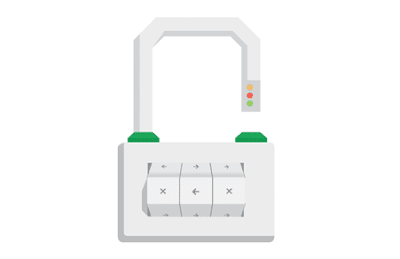HTTPS/SSL Update: Security As A Ranking Factor
-

Aaron Gray
-
 April 27 , 2023
April 27 , 2023 -
 4 min read
4 min read
Google rolled out the HTTPS/SSL update on August 6, 2014, to encourage webmasters to use the security protocol by default for their websites. Before this change was launched, the search engine already encrypted connections to its products like Search, Gmail, and Google Drive. The update makes sure that users have a safe online experience even when they leave the SERPs.
What’s It For

The HTTPS/SSL update’s primary objective is to ensure that the websites being accessed by searchers through the platform are secure. The developers decided that security encryption should be a ranking factor for the results pages. It means that the search engine now prioritizes sites that send data through an HTTPS or Hypertext Transfer Protocol Secure instead of those that don’t use the protocol.
This type of protocol offers three potent layers of data protection:
- Encryption – This process pertains to encoding data in such a way that it can only be deciphered by authorized parties that have the encryption key. Think of it as a barrier that prevents outsiders from eavesdropping or snooping on the transaction between the user and website.
- Data Integrity – Data integrity is ensuring that the information received by users from the database is consistent and accurate.
- Authentication – As a layer of protection, authentication ensures that all online interactions between a user and site are secure. It involves verifying the encryption key sent by the computer to the server.
The search engine also promoted forward secrecy as a default setting for all their products, which addresses the issue of retrospective decryption. This means that private keys for a particular transaction won’t be stored permanently to prevent hackers from accessing your old emails and other confidential documents today.
What Were Its Effects
At the time it rolled out, the HTTPS/SSL update was only “a very lightweight signal” which affected less than one percent of the overall queries globally. This was done to give webmasters time to make the necessary adjustments to their websites and switch to HTTPS.
The developers announced that it had a slight influence in rankings, unlike significant factors such as high-quality content. However, they did confirm that the signal may be strengthened to facilitate the move towards a safer browsing experience for everyone in the World Wide Web.
What It Means for You
Today, most web hosting providers offer SSL encryption in their product packages. The service has become more prevalent, and it’s easier than ever to get security encryption for your website.
Here are some of the best practices for rolling out HTTPS for your website:
-
Select an Appropriate Security Certificate To start, you must decide which type of certificate you need, whether single, multi-domain, or wildcard. These are issued by a certificate authority or CA which verifies your ownership of a web address. Single certificates are ideal if you want a single secure domain, multi-domain is used for multiple well-known origins, and the wildcard type is given for a reliable source with several dynamic subdomains.
Once you’re on your way to set up your certificate, Google recommends using a 2048-key for the highest level of security. The team also suggests using relative URLs for content in the same secure website and protocol relative URLs for other domains. - Take Advantage of Server-Side 301 Redirects If you’ve already made your website live without an HTTPS and want to apply the certificate, you should use 301 redirects to take visitors to your new, secure pages. This type of redirect is used when a page has been moved to a new location permanently. Think of it as a mail forwarding service similar to when you change homes in real life.
- Make Your Secure Domain Crawlable You should ensure that search bots can crawl through your HTTPS site by using robots.txt. Moreover, scan your HTML tags to make sure that there aren’t meta no index tags anywhere in the new location of your content. You can also use Google’s URL Inspection Tool to access information about the indexed version of your site, inspect a live URL, view a rendered version of the link, and request for your HTTPS pages to be indexed.
- Ask If Your Web Server Supports HSTS HSTS or HTTP Strict Transport Security requests the secure version of a page from the browser automatically even if the user types in the HTTP version of the URL. It also signals Google to display your secure links in the search results to lessen the risk of directing your visitors to unsecured content. Ask your web hosting provider if they support this functionality.

